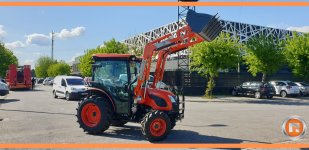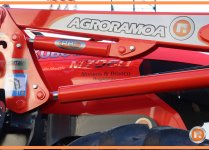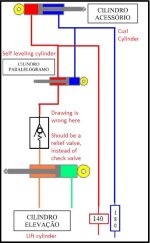npalen
Elite Member
That is an interesting linkage for the self-leveling. The long rod doesn't look like it would have enough strength in compression. The fact that the tilt cylinders would be in tension when back dragging would be a plus.Yeah, there may be others I'm not familiar with - AFAIK, the 580B may be the only one that used a hydraulic cylinder (unless earlier models had it) - but the later 580C replaced the hydraulic cylinder with a linkage that biased the joystick's curl mechanism - here's a pic of a 580C, the long rod that's attached to the bucket's "bell crank" arms and goes back to the cab area is what replaced the cylinder type. Probably a cost-cutting measure, one less cylinder required
It's conceivable that the later (mechanical) version of self level might be adaptable to other loaders, but it'd sure be an "interesting" project (phrase stolen from a Chinese fortune cookie) ... Steve
Edit: The long rod may be just a leveling indicator?



